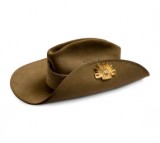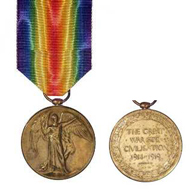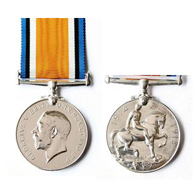NORRIS William Edward
-

- 97
- Private
- 15 Battalion
- 'A' Squadron, 14th Australian Light Horse Regiment
- Beerburrum Soldier Settlement
- Yes
- about May 1884
- Galway County, Ireland
- 15 November 1915
- Beltana
- 13 May 1916
- Sydney
-
Family
William Edward Norris was born in Galway County, Ireland in about May 1884. He emigrated to Queensland.
Military Context
The 14th Light Horse regiment was a mounted infantry unit of the Australian Army. In March 1916, the regiment was raised as part of the AIF at Enoggera and attached to 3rd Division. It departed Sydney on the steamship “Beltana” on 13 May, bound for England, where it was intended to be brought up to full strength to serve as the 3rd Division’s light horse regiment. Before that could occur, the establishment was reduced to only one squadron per division and as such only ‘A’ Squadron was formed. Soon afterwards, however, establishments were changed again, this time removing mounted troops from the order of battle altogether. The 14th Light Horse regiment was disbanded. Trooper Norris was transferred to 15th Battalion, recently arrived in France from Egypt.
The 15th Battalion was raised six weeks after the outbreak of the War. Three-quarters of the battalion were recruited as volunteers from Queensland, and the rest from Tasmania. With the 13th, 14th, and 16th Battalions it formed the 4th Brigade, commanded by Colonel John Monash. After service at Gallipoli, the battalion returned briefly to Egypt. In December 1915, the 15th Battalion was split and it provided experienced soldiers for the 47th Battalion. The 4th Brigade was combined with the 12th and 13th Brigades to form the 4th Australian Division. In June 1916, they sailed for France and the Western Front.
Private Norris was still safely training in England when the 15th Battalion fought with distinction at Pozieres and Mouquet Farm, but there was no shortage of danger to greet his return from illness to France in February 1917.
On 11 April, like all battalions in 4th Brigade, the 15th suffered fearful losses in the first assault on German defences at Bullecourt. In an attempt to surprise the Germans, the infantry attacked without prior creeping artillery bombardment. The supporting tanks, supposed to “crumble down the barbed wire” were ineffective.
On 7 June 1917, the 15th Battalion participated in the battle of Messines. A year of careful preparation during which galleries beneath the German positions were packed with explosives (and a sustained artillery bombardment prior to assault by the infantry) provided a platform for success. When infantry charged forward to positions largely obliterated by detonation of the subterranean explosive, the contrast to their reception at Bullecourt could not have been more stark.
The balance of 1917 was spent in steady progress towards the Hindenberg Line. In March and April 1918, the battalion helped stop the German spring offensive.
Enlistment
William Edward Norris enlisted at Brisbane on 15 November 1915. He stated that he had been born at Galway, Ireland. He recorded his age as 31 years 6 months and occupation as “labourer”. He was single. His “next of kin” was his friend of similar age, Jack Dowridge of Milton Rd., Milton, Brisbane. William had previously been a member of the Irish Rifles in Brisbane for two years. His new term of service was the duration of the war plus 4 months.
At enlistment, his height was 5 feet 6¾ inches, weight 133 pounds, of dark complexion, blue eyes and grey hair. He carried a tattoo on his right forearm. His religion was Roman Catholic. His service number was 97.
Private Lamb’s service commenced with the 11th Depot Battalion at Enoggera. He was allotted to ‘A’ Squadron of 14th Australian Light Horse Regiment.
Military Service
Trooper Norris embarked at Sydney on 13 May 1916 aboard the “Beltana”. He disembarked at Devonport on 10 July. He marched out to the 4th Training Battalion. Although notionally in the 3rd Division Cavalry (which no longer figured in the Allies’ plans for order of battle), the 14th Light Horse Regiment had been disbanded and he was destined to join the 15th Reinforcement draft to 15th Battalion.
On 30 September 1916, he proceeded from his training battalion at Rollestone, Wiltshire to France. He marched in at the 4th Australian Divisional Base Depot at Etaples next day. On 13 October, he marched out to 15th Battalion where he was taken on operational strength on 23 October. It was a miserable time to arrive. For the next seven weeks, the men wallowed in mud - morning, noon, and night. All soldiers exposed to the conditions of trench warfare generally found themselves at great risk of illness – trench fever, trench feet, fevers, pleurisy, influenza, myalgia took a continual toll, even away from shellfire and bullets. In this regard, Private Norris’ health was to be affected worse than most.
On 7 December, he reported sick to 36th Casualty Clearing Station at Heilly with influenza. On 10 December, he was admitted to the 20th General Hospital at Camiers. On 28 December, he was transferred to the No.6 Convalescent Depot at Etaples and, then on 1 January 1917, to No.5 Covalescent Depot at Cayeaux.
In February, he was fit enough to return to duty. On 17 February, he marched in at the Base Depot at Etaples and he re-joined his unit in the field on 25th February. The disastrous assault on Bullecourt was on 11 April.
The 15th fought at Messines on 7 June. On 22 June, Private Norris again needed to report to hospital in the field. On 30 June, he was admitted to the 10th Field Ambulance suffering from “P.U.O.” – pyrexia of unknown origin. The soldier would have a persistently elevated temperature, body soreness and general feeling of unwellness, but there would be no obvious cause that a medical officer could identify. From 5 July until 10 September, when he was recovered and able to march in to the Base Depot at Rouelles, he passed through the hands of medical staff at 2nd and 7th Casualty Clearing Stations at Boulogne and the 10th Convalescent Depot at Trouville.
He re-joined his unit in the field on 23 September 1917.
On 15 November 1917, the second anniversary of his enlistment, he proceeded to the United Kingdom on leave. He returned to his unit on 2 December.
On 28 January 1918, he presented to 13th Field Ambulance in the field (Belgium) and was isolated in the 53rd Casualty Clearing Station at Bailleul, apparently with pyrexia. On 23 February, absent improvement, he was transferred to 23rd Casualty Clearing Station at Lozinghem where his condition was diagnosed as “cerebral spinal meningitis”. On 25 February, he was transferred to the 4th General Hospital at Camiers.
On 6 March, he embarked on Hospital Transport “Stad Antwerpen” for England with “severe trench fever” and was admitted to Brook War Hospital, Woolwich. On 23 March, he was transferred to the 3rd Australian Auxiliary Hospital in Dartford. On 5 April, he was discharged from hospital to the No.3 Command Depot at Hurdcott.
On 8 June 1918, he was marched out to the Overseas Training Brigade at Longbridge Deverill but six days later reported there for a short stay at the Group Clearing Hospital with lumbago. He was granted leave to London but contracted influenza. On 20 June, he was admitted to the 1st Auxiliary Hospital at Harefield Park, Middlesex. He was discharged to report to the No.1 Command Depot at Sutton Veny on 28 June.
On 9 August 1918, he marched in to the No.2 Command Depot at Weymouth, with his medical fitness classified as B2b. The examination the day before had found “General condition poor; lost good deal of weight; no energy; headaches and pains down back; unable to continue on training”. His medical condition continued to affect his effectiveness for duty. He reported sick twice more before he finally left England to return to Australia.
Return to Australia
Private Norris was one of 600 invalids in Transport D35 which departed Trinity Pier, Millbray Docks, Plymouth on 4 December 1918 aboard the “Somerset”. They disembarked at Melbourne on 15 January. Private Norris and other Queenslanders then travelled by train to Brisbane.
On 25 January 1919, the No.1 AIF Command Depot at Sutton Veny provided a summary medical report on William Norris.
He was discharged from the A.I.F. on 24 February 1919. He was medically unfit. His disability was described as “General debility following C.S. Meningitis”.
After the War
Private Norris was awarded the British War Medal and the Victory Medal.
William Norris married Elizabeth Margaret Emily Wearne in 1919. In the Electoral Roll of 1919, William Edward Norris, “farmer”, and his wife were recorded at Elimbah.
In the Electoral Roll of 1925, the couple were resident at Queen St., Annerley, Brisbane. William’s occupation was “labourer”.
In the Roll of 1936, Elizabeth Margaret Norris, home duties, was still living at Queen St., Annerley but her husband was a labourer at Nanango.
William Edward Norris, aged 58 years, died on 30 September 1942 in the Mental Hospital, Ipswich. The informant to his death certificate was the Medical Superintendent. He stated that William had been an inmate of the facility for the past 14 years. In effect, William and Elizabeth had parted not long after the Census of 1925. William's death was the result of myocarditis, lobar pneumonia and influenza. His body was buried in Ipswich Cemetery on 2nd October.
In the Rolls of 1943 and 1949, Elizabeth was living at Cavan St., Annerley. In the Roll of 1949, living at the same address were John Joseph Norris, aircraft ground engineer, and Frances May Norris, dressmaker.
William’s widow, Elizabeth Norris, died in Queensland on 7 September 1958.
-
- Bullecourt
- Messines
- Western Front
-

-

- Returned to Australia
- Disembarked "Somerset" on 15th January 1919 at Melbourne
- 30 September 1942
- Ipswich Mental Hospital
- 58 years
- Ipswich Cemetery on 2 October 1942
-
Australian War memorial
National Australia Archives
Ancestry.com
Queensland Death Certificate registration number 1943/4825.
History of the 15th Battalion AIF 1914-1918 by Lieutenant T.P.Chataway
- Charlie50
